Scottish economic bulletin: March 2024
Provides a summary of latest key economic statistics, forecasts and analysis on the Scottish economy.
This document is part of a collection
Business Conditions
Business activity strengthened in January however some manufacturers are facing supply chain disruption.
Business Activity
- The Purchasing Managers Index (PMI) business survey indicates that business activity in Scotland’s private sector increased in January for the first time in six months (51.7). This was largely driven by a pick-up in service sector activity while manufacturing sector activity continued to weaken.[5]
- While overall business activity increased, new business orders continued to fall, albeit at a more marginal rate than in recent months and business optimism for the year ahead remained positive but softened slightly.
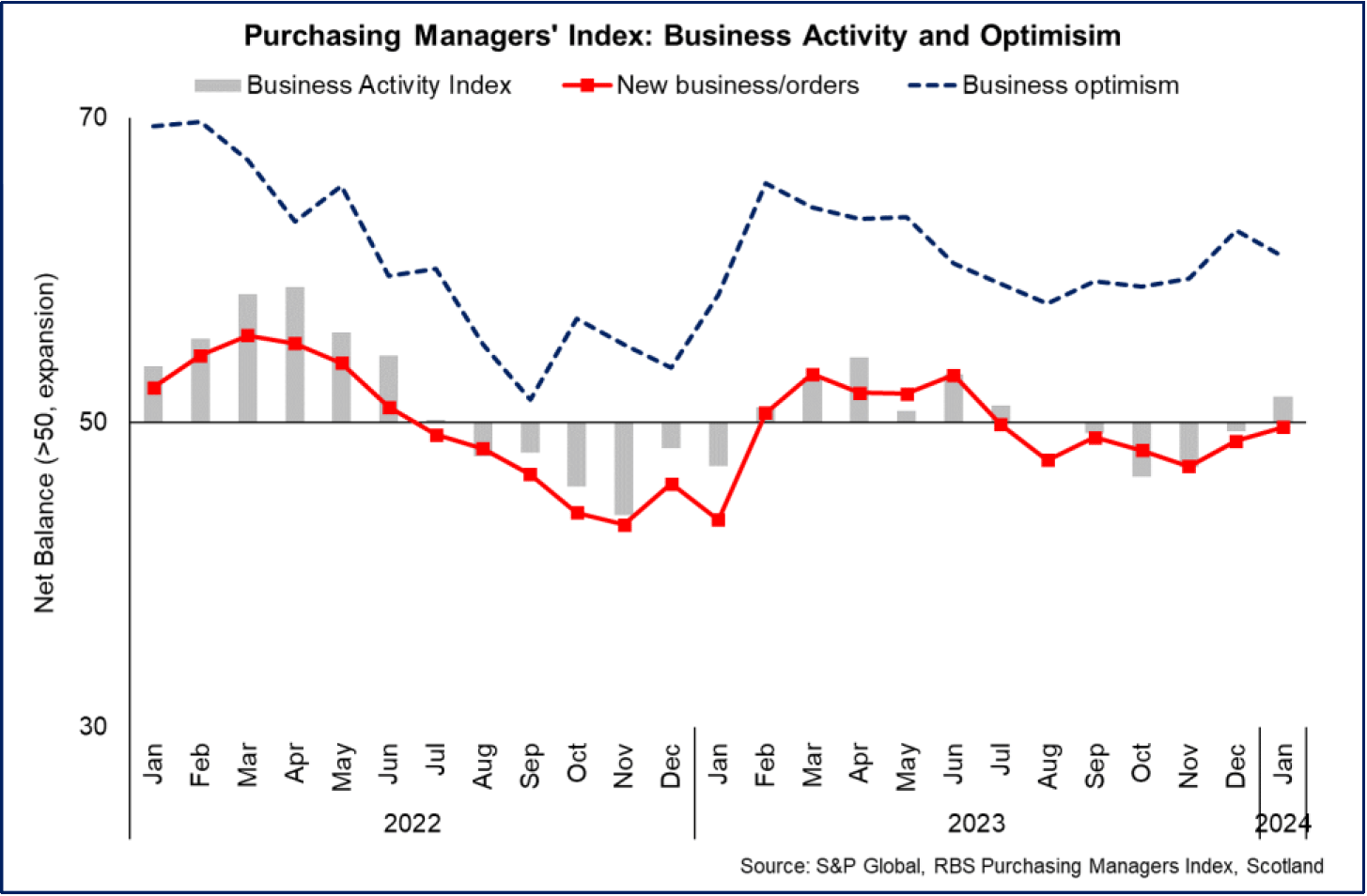
Business Concerns
- Business concerns have continued to evolve at the start of the year as trading conditions have remained challenging but with signs of improvement for the year ahead.
- The Business Insights and Conditions Survey (BICS) for March indicates that businesses concerns around energy prices (13.4%) and falling demand (12.6%) have largely converged as the two main business concerns at the start of the year. This is followed by inflation of goods and services (11%) and competition with other UK businesses (10.2%).[6]
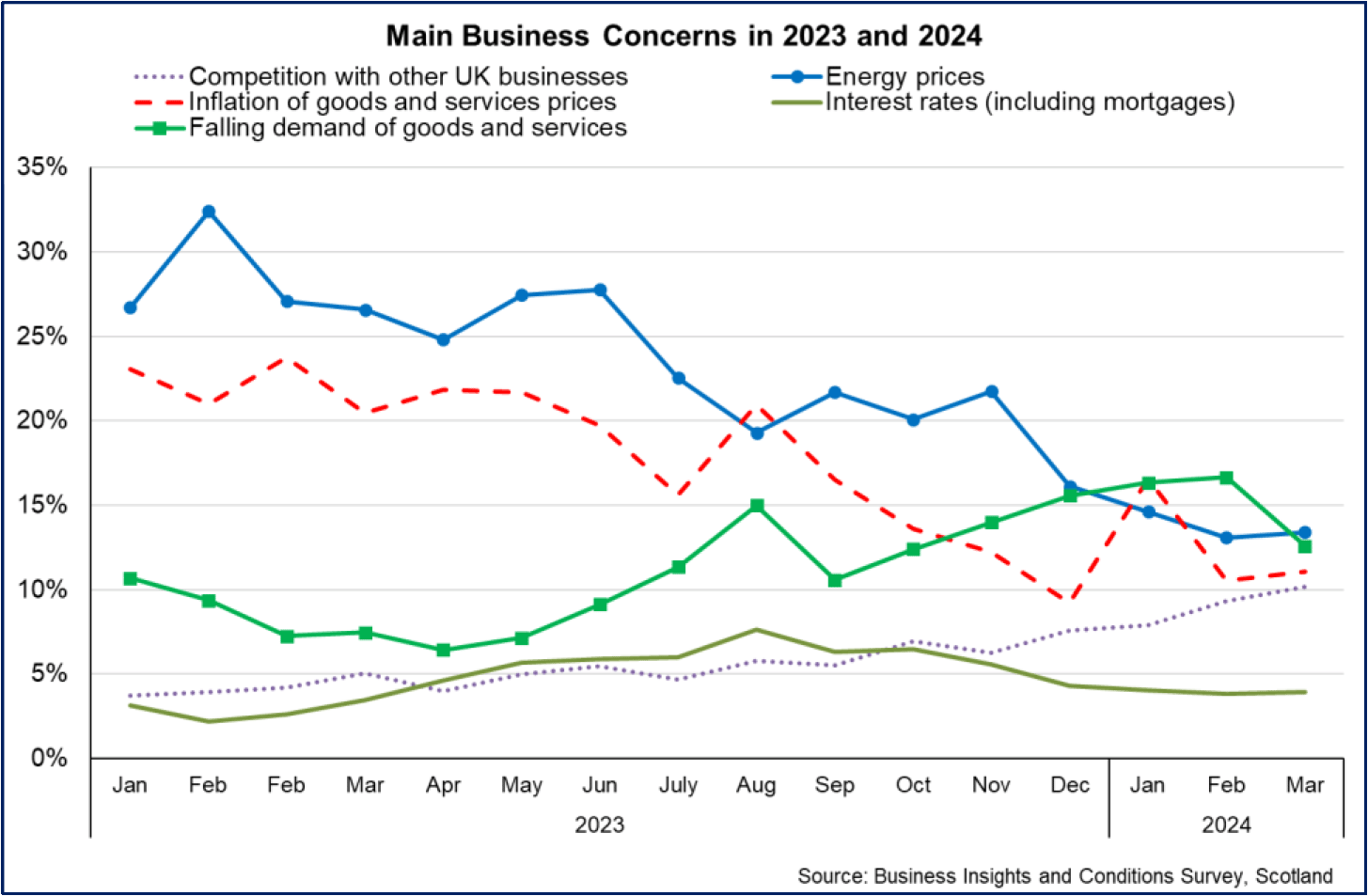
- Concerns regarding interest rates eased over the second half of 2023 and have stabilised at the start of 2024 likely reflecting increased expectations that interest rates have peaked and may start to fall over the coming year.
Business Costs
- At a headline level, producer input price inflation has continued to decline with producer input prices falling on an annual basis for an eighth consecutive month and by 3.3% in January. The change in input prices has also been reflected in fall in producer output prices which decreased 0.6% over the year to January. [7]
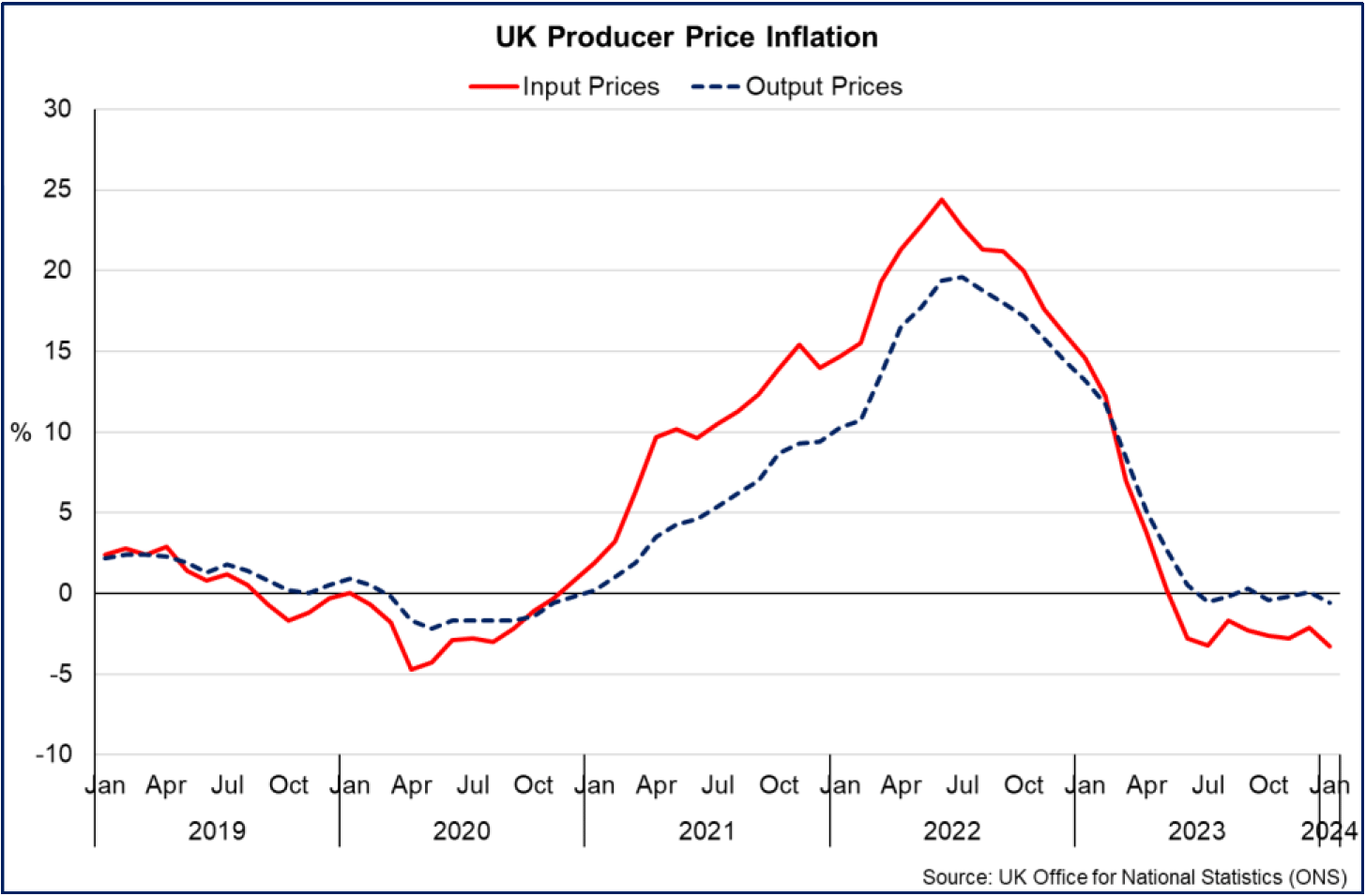
- Overall, input and output price levels have been relatively stable since June 2023, albeit they are significantly higher than at the start of 2021 (c. +25%) prior to the spike in inflation. The largest downward contributions to the annual input inflation rate for producers in January came from inputs of chemicals (-8.5%) and crude oil (-11.4%). Domestic food input prices have also continued to fall on an annual basis (-2.2%), however imported food input price inflation has remained more persistent (4.6%) alongside fuel inputs (3.3%).
- Looking at a broader range of input costs across the manufacturing and services sectors, PMI business survey data indicates pace of business input cost inflation has returned to around its lowest rates since the start of 2021. However, higher fuel, energy, supplier and salary costs contributed to an increase in input costs in January and at its fastest rate in five months.[8]
- BICS data for Scotland shows that many businesses (36.2%) are not considering raising prices in March. It also provides insights on which costs remain most challenging to absorb: labour costs (34.6%) is the main factor causing businesses to consider raising prices; followed by energy prices (27.8%); and raw material prices (21.5%).
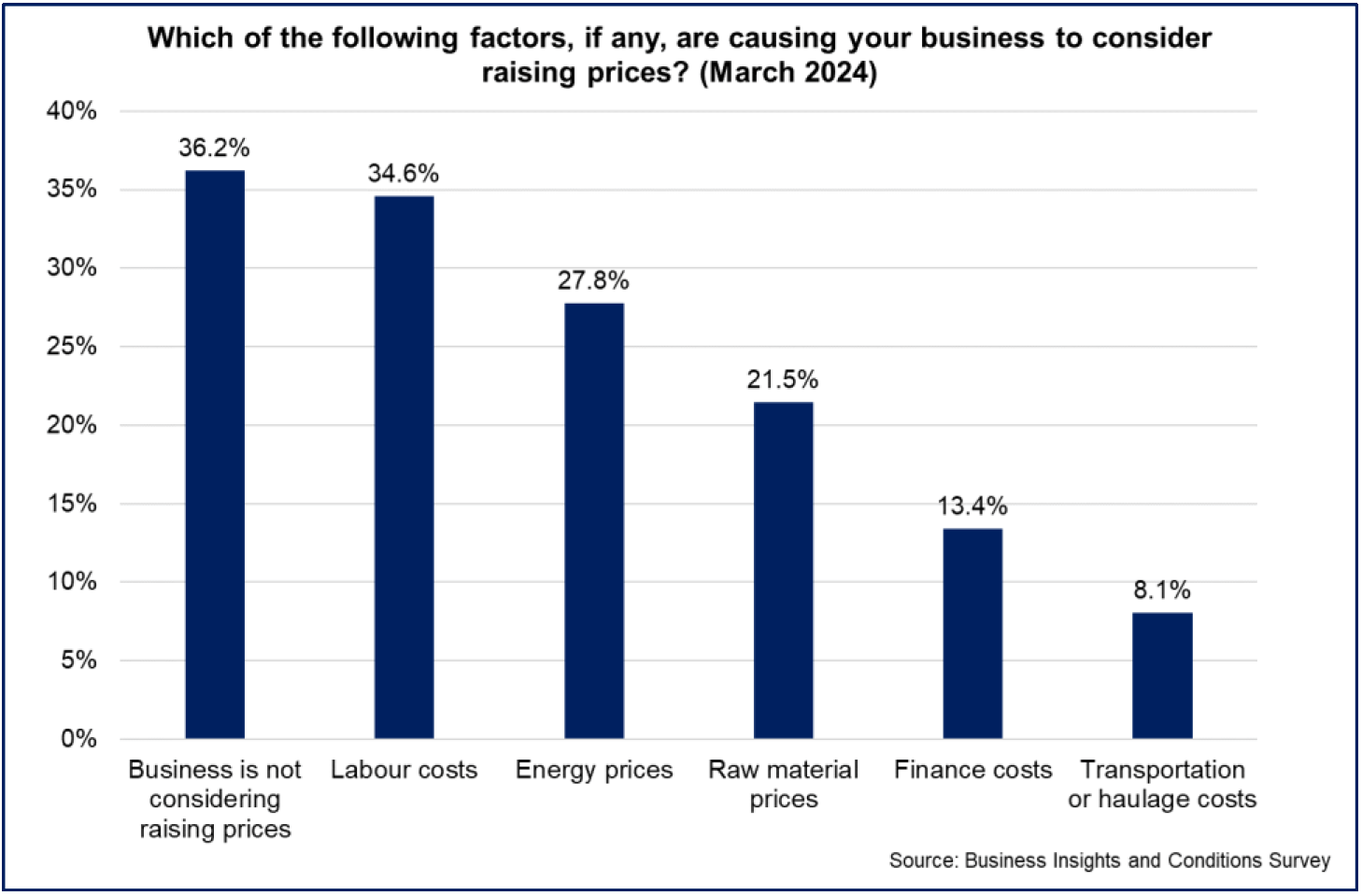
- 8.1% of businesses reported that transportation or haulage costs are causing business to consider raising prices. This potentially reflects in part the increase in shipping and supply chain costs and delivery times that businesses are facing due to the attacks on commercial shipping in the Red Sea and the rerouting of shipping routes from Asia to Europe round the Cape of Good Hope rather than through the Suez Canal.
- In February, PMI business survey data show that the UK manufacturing supplier delivery time indicator weakened to its lowest rate since the middle of 2022 while the increase in input prices partly reflected the increase in transportation costs.[9]
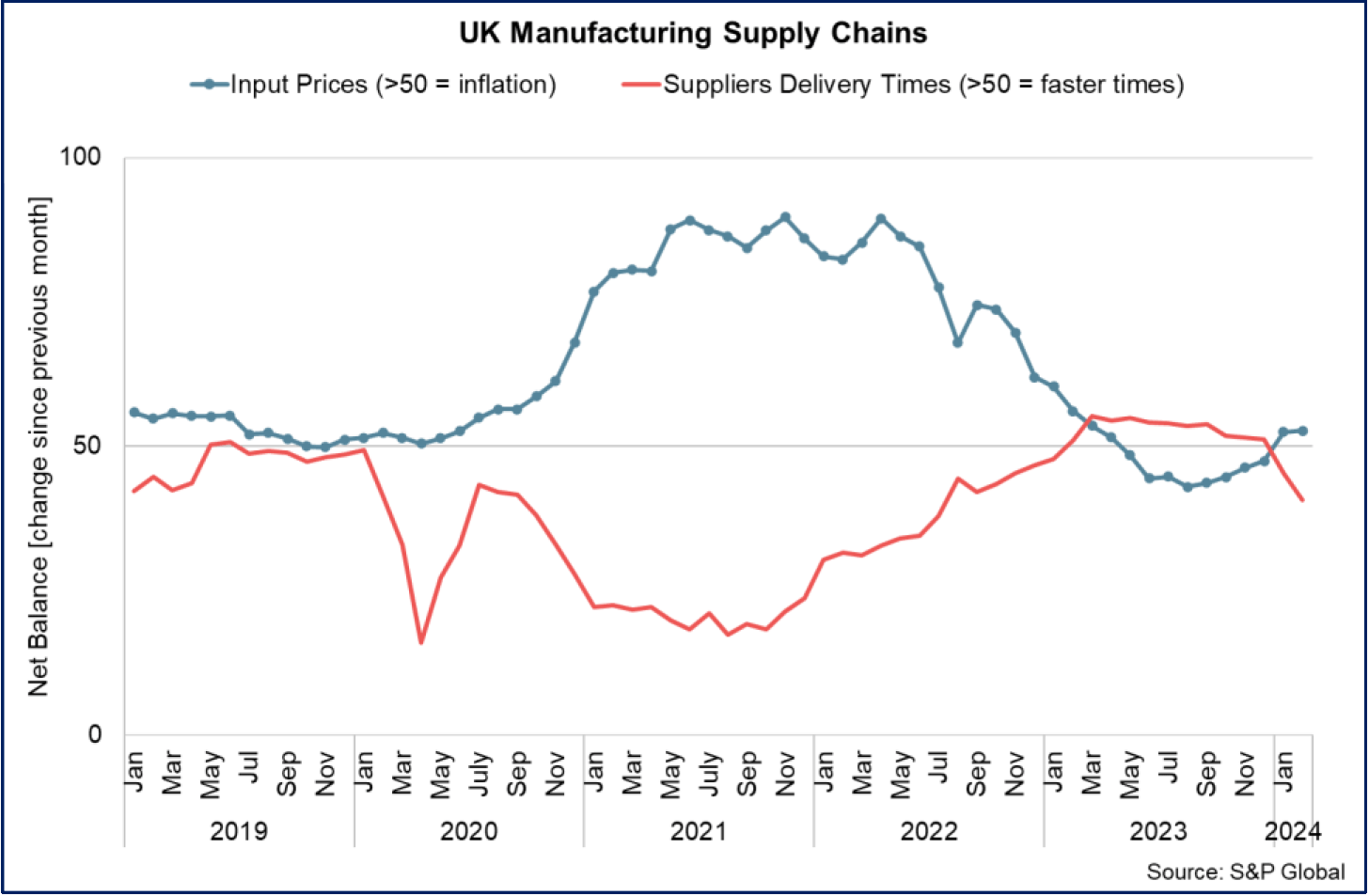
- There remains significant uncertainty over the persistence and impacts of the current supply chain disruption. BICS data for Scotland show that only 4% of businesses in January experienced global supply chain disruption, remaining below the average for the past year (7.5%).
- This indicates that businesses, particularly in manufacturing and retail, are reporting that they are being impacted by international supply chain disruption, however the scale of impact at this stage remains moderate and will ultimately depend on the persistence and scale of supply chain disruption over the coming year.
Business Investment
- The combination of business concerns around weakening demand, inflationary pressures and higher interest rates continues to weigh on business investment decision making.
- The SCC Quarterly Economic Indicator for Q4 2023 reported that while on balance firms continue to increase rather than reduce investment, over half of firms continued to report no changes to both total (55%) and training (54%) investment.[10]
- BICS data for Scotland in January show 15% of respondents thought their capital expenditure would increase over the next three months, lower than at the start of 2023, while 8.4% of respondents continue to expect to decrease capital expenditure over the coming year. Overall compared to the start of 2023, there has been an increasing share of businesses reporting that capital expenditure will stay the same.
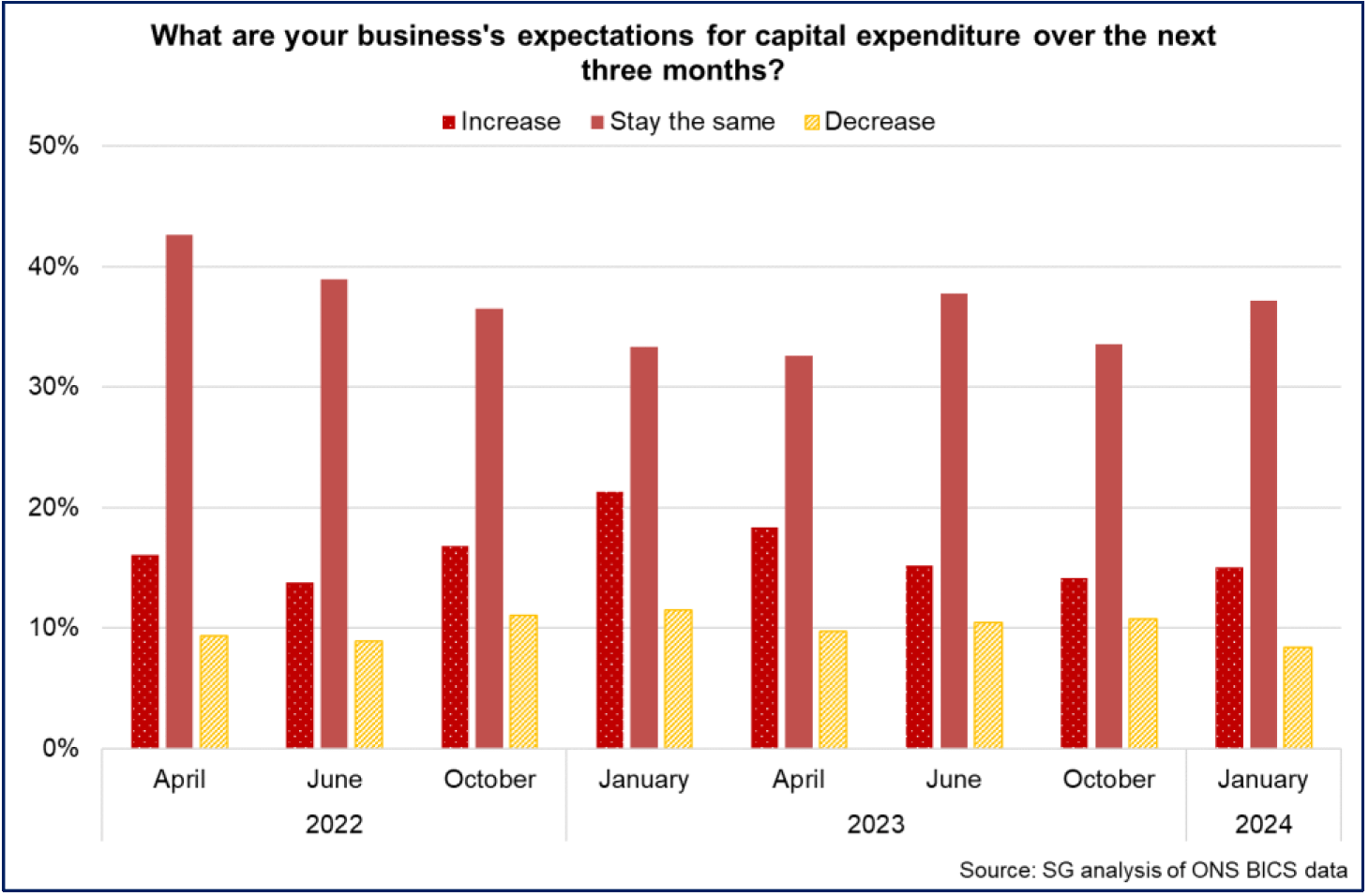
Business Optimism
- Despite the current weakness in business activity, order books and investment intentions, PMI business survey data indicates that business optimism for the year ahead improved over the second half of 2023, rising to a seven-month high in December before easing back slightly in January. Optimism remains firmly positive on balance however, with firms in the services sector continuing to add to staffing levels in expectation of growth over the coming year.[11]
- BICS data for Scotland indicates that at the start of 2024, most businesses expect their overall business performance to stay the same (41.5%) or increase (37%) over the coming year. On aggregate, this has remained broadly stable compared to the start of 2023, while the share of businesses expecting their performance to decrease has fallen slightly over the year to 7.6%.
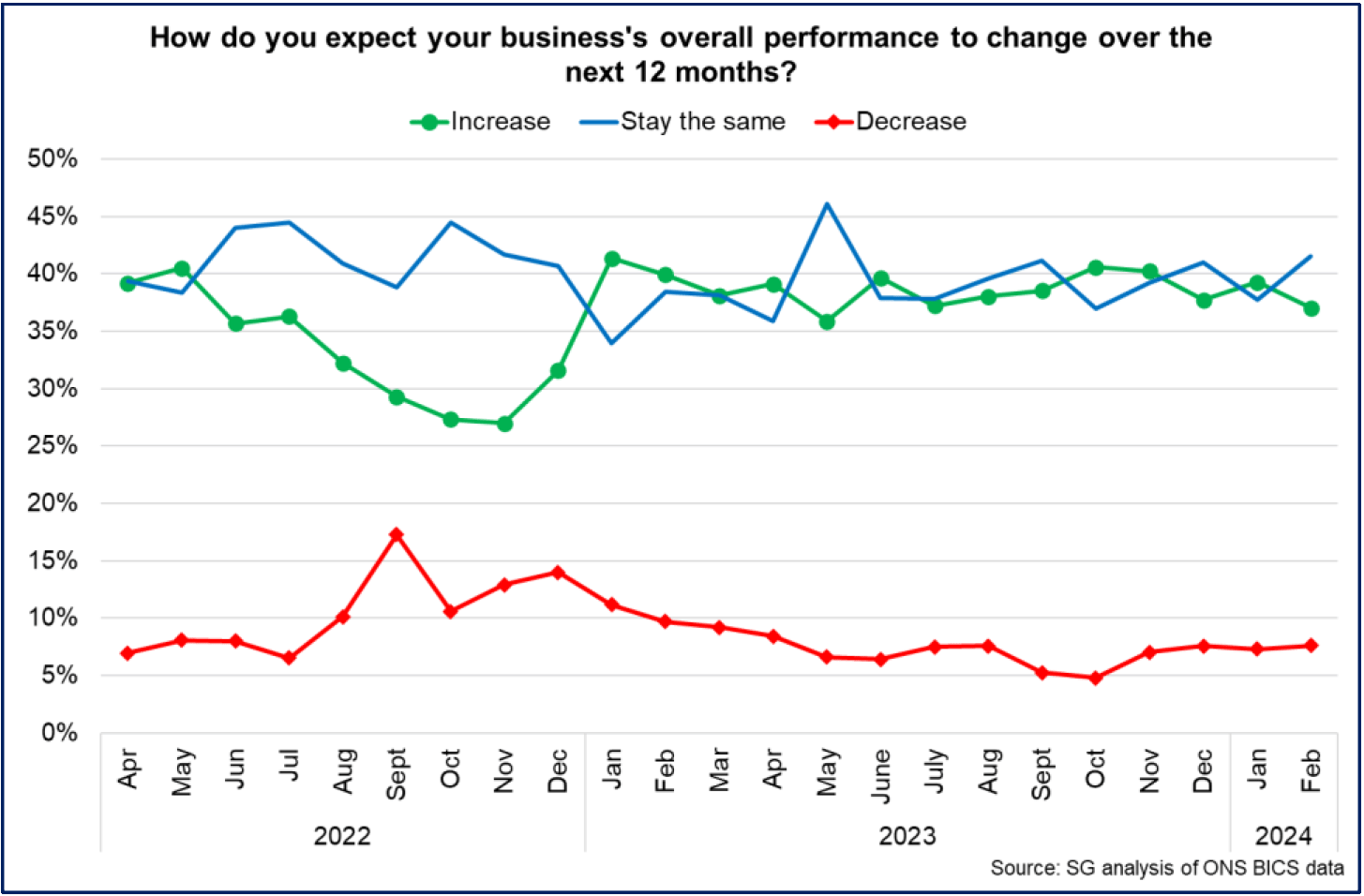
Contact
Email: OCEABusiness@gov.scot
There is a problem
Thanks for your feedback